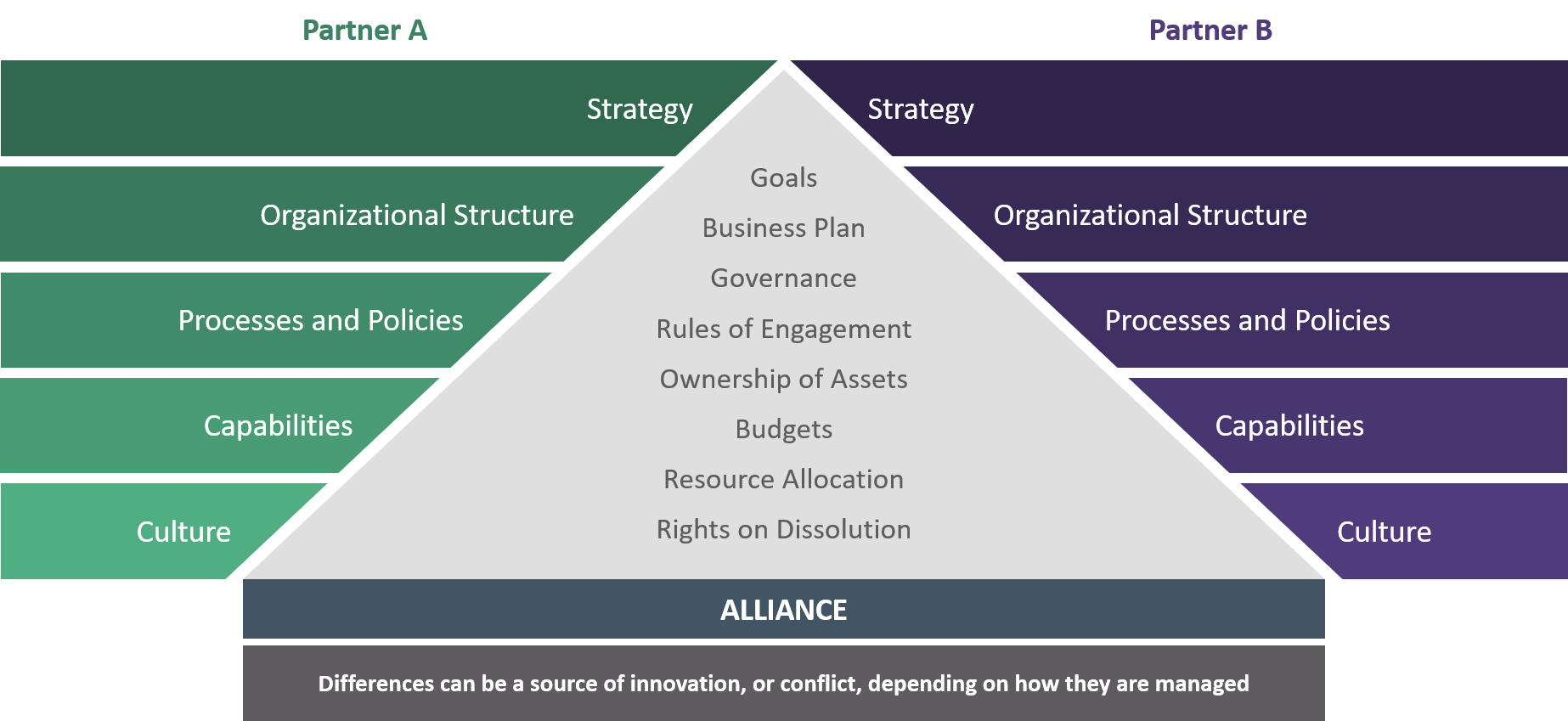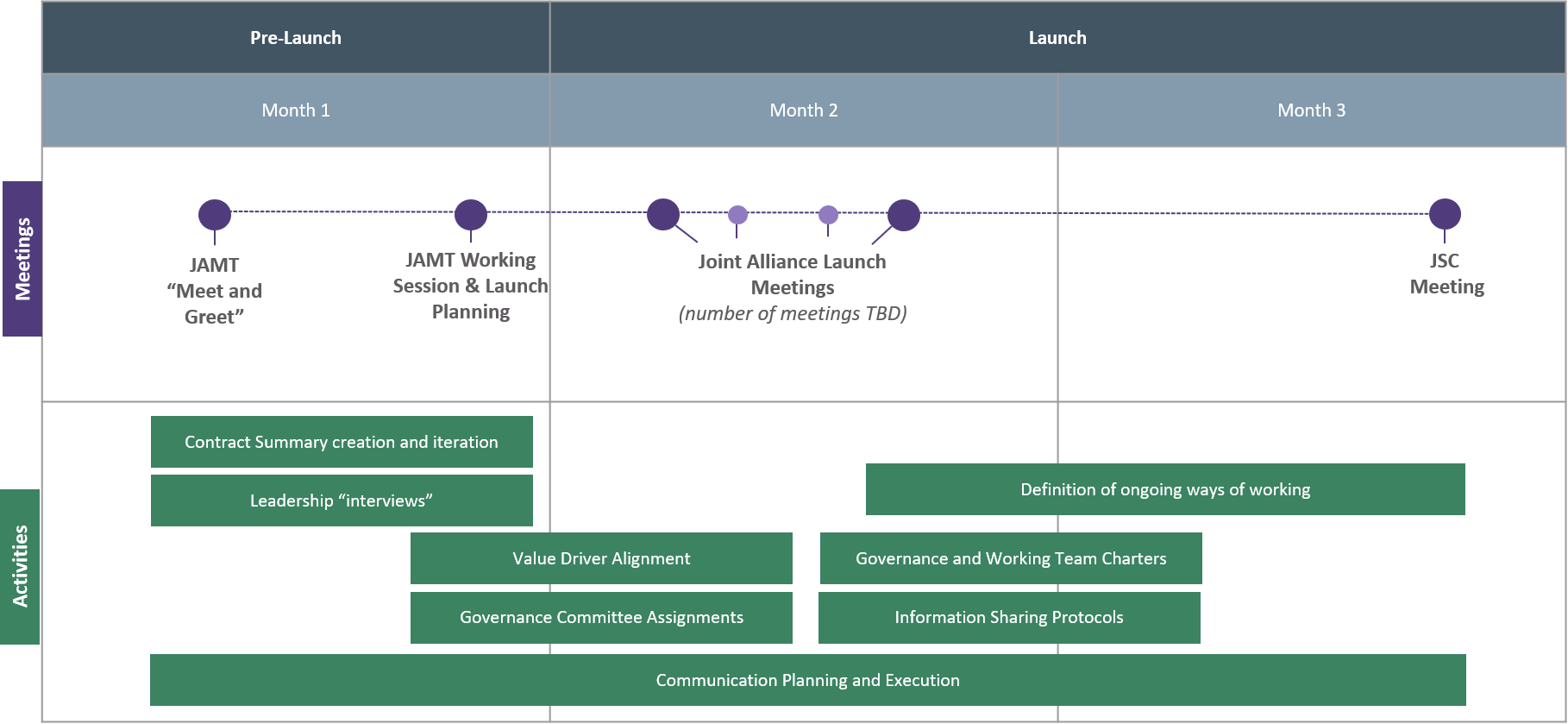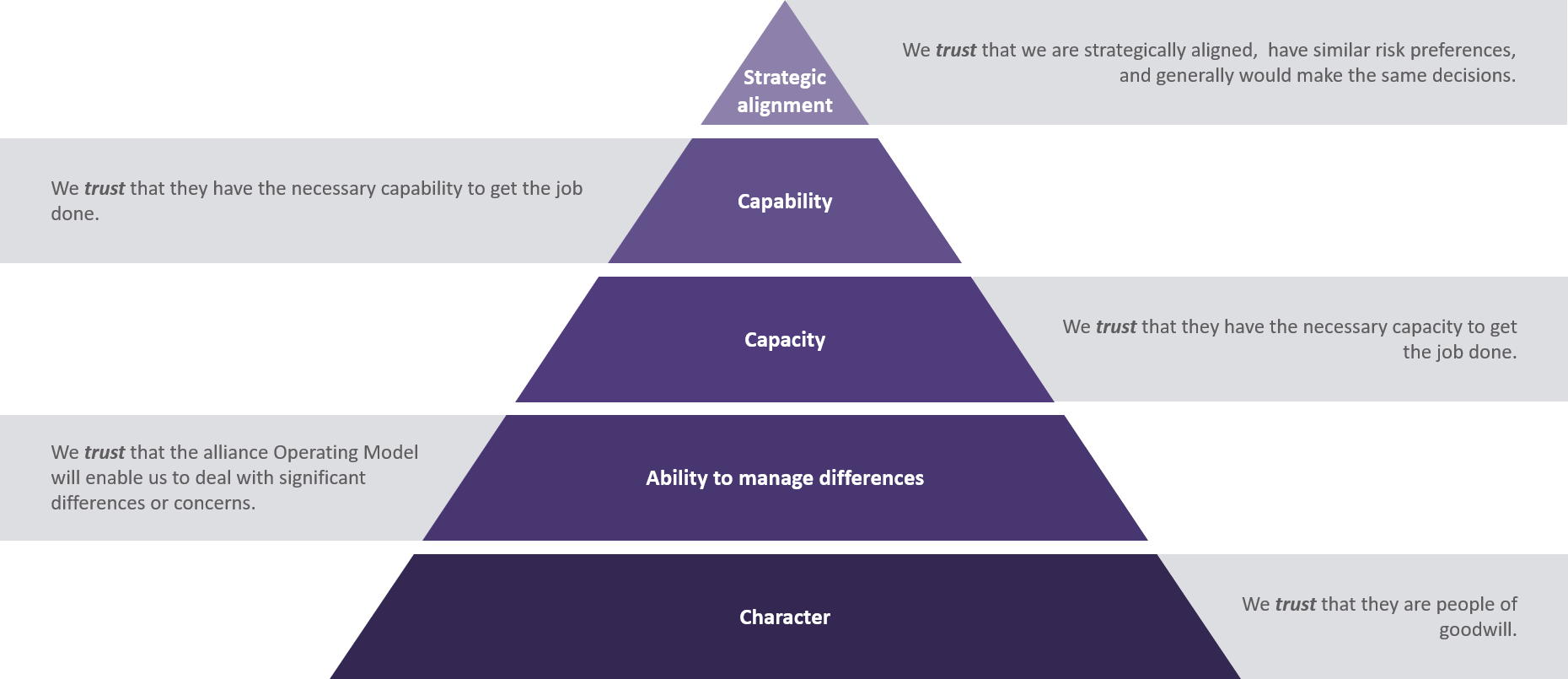
This past year, alliance launches across the life sciences industry shifted from in-person to completely virtual. Launching an alliance has always been difficult given the complex challenge of different organizations coming together with completely different strategies, organizational structures, processes, capabilities and the like to execute on the alliance’s goals.

Since March 2020, the challenge of managing these differences has gone up ten-fold. Unable to connect in-person and build those foundational relationships, it has been extra taxing for teams to set up and operationalize new alliances. Never mind trying to manage global time zones. It is akin to being in a long-distance personal relationship!
Recently, Vantage Partners presented on best practices for executing virtual alliance launches at this year’s Strategic Alliance Management Congress. Adam Kornetsky discussed five key challenges we have experienced in our virtual launch work and shared best practices to address them. As we move into the post-COVID world, many of these practices and learnings are likely to remain useful for your next alliance launch – whether it’s in-person, virtual, or a combination of the two!
1. Ensuring strategic alignment without an in-person launch
The challenge
Typically, alliance launches start with an in-person event. This not only allows relationships to be built but really forces participants to be present and in the moment without distractions. In other words, participants can fully immerse themselves in the alliance. All parties hear the same messaging from leadership, have opportunities to breakout in smaller discussions by function, and can ask questions and drive alignment of the alliance strategy. So, how can we maximize the benefits of launch without an in-person event?
Our solutions
- Conduct “Leadership Interviews” to document an aligned view of the collaboration, value drivers, potential risks, and strategic goals key executives might have. This process ensures all senior stakeholders feel their input has been heard and jump-starts alignment on the alliance’s mission and vision.
- Give time to top executives to share the strategic vision to an all-alliance audience early in the collaboration (consider making the executive address a “carve-out” event). This dedicated time generates excitement among working members and highlights the ultimate goal of every life sciences collaboration: get therapies to patients.
- Consistently refer to the value drivers during the execution phase. It’s easy in a virtual environment to lose sight of the value drivers and why the alliance was agreed to in the first place. Reminding working teams that each side is bringing unique value will instill a mindset of teamwork and joint problem-solving.
- Fragment launch meetings so that each committee and sub-team are fully aligned on their mission, activities, and deliverables. Because we cannot realize the value of an in-person event, consider having a few, bite-sized meetings to build alignment over time.
- Ensure alliance management plays a role in facilitating sub-committee and sub-team launch meetings so that they have a fully informed view across the collaboration. Especially early in a collaboration, alliance management will have to demonstrate agility and tackle alliance issues that inevitably come up, underscoring the value of a fully informed view.
2. Maintaining momentum without frequent face-to-face interactions
The challenge
In our experience, excitement and dedication to executing alliance work is never higher than immediately after an in-person launch. Often, this time includes face-to-face deep dives at the functional level to decide what work needs to get done and how, providing opportunities to get to know cross-functional counterparts. With a virtual launch, we get to know one or two people — often our direct counterparts — and struggle to understand the broader context of our partner organizations. Additionally, we must be honest with ourselves — in virtual planning meetings, we multitask! We have distractions — too many to name here — and it’s difficult for everyone to be engaged.
Our solutions
- Instead of planning a single alliance launch event that might span 1-2 days, consider breaking it out to multiple, shorter events. It’s easier for people to look at a computer screen and pay attention in shorter bunches than in a single, multi-hour event.

- Schedule out a series of launch “working sessions” for governance committees so capability is shared and program ramp-up occurs as quickly as possible. Even something as simple as getting meetings on the calendar is a nice first step!
- Set the Joint Steering Committee kick-off meeting 60-90 days after launch, with a set of agreed goals and deliverables to achieve by then. This lets other committees and sub-teams to get their feet underneath them and generates a more robust JSC kick-off.
- The more, the merrier (at first!) Including more functions in the beginning (easy to accomplish with Zoom) will ensure increased cross-functional dialog and planning.
3. Handling logistics, scheduling, and time zones with new technologies and remote workforce
The challenge
Teams, for all the right reasons, will not spend more than 2-3 hours on a video conference call. However, our working sessions often need more than 2-3 hours. Additionally, we must manage different meeting platforms, policies, and a workforce scattered across different time zones. Not an uncommon alliance challenge, but now it seems even more difficult to keep track of everyone’s time zones.
Our solutions
- Together with IT, align on technology platforms as soon as possible, and call out where security issues may become a problem.
- Conduct a launch event for all the executive administrators likely to be supporting team members on the alliance. Administrators are key (and often overlooked) members of the alliance and their contributions will be key to the alliance’s success. Reduce back-and-forth by designating an administrative lead from each organization to schedule meetings that executive leadership attends.
- Agree on preferred preferences for best modes of communications (e.g., email, calls).
- Recognize the reality of on-camera, on-screen fatigue. Giving a break from video (e.g., Zoom-free Fridays) allows people to recharge and better contribute to meetings going forward.
4. Building relationships, trust, and comradery among team members
The challenge
How can we build relationships, trust, and comradery among team members without face-to-face interactions? We all know it’s easier to build trust in person, and not getting together truncates the “getting to know you” period of informal chats between meetings or at meals. In a virtual context, all conversations seem to be work-related. We’re hearing more often about folks defaulting to a lack of trust with their partners — an extraordinary challenge to overcome.
Our solutions
- Implement ice-breaker activities at the beginning of launch activities. Get creative with it!
- Include “get-to-know-you” activities in launch meetings. Getting to know your counterparts early is what allows foundational trust to be built among teams.

- Take time to work through highly interdependent activities “in real time” to build rapport, help others learn how you think, and rapidly achieve alignment.
- Overcommunicate often — no surprises!
5. Achieving team member engagement and enthusiasm with meetings online only
The challenge
We have found that enthusiasm with newly formed partnerships wanes more quickly when working remotely. A shorter honeymoon period makes it uniquely challenging to get team members to really engage and sustain their enthusiasm. Whether we feel less connected to “the cause” being away from the office or there are fewer opportunities for “fun” elements of a partnership (e.g., travel, dinners, team-building activities), overcoming these limits is a daunting task.
Our solutions
- Meet frequently — you cannot over-communicate! We typically meet as a core alliance management team 3-5 times a week to address any alliance issues, jointly progress deliverables, and track action items.
- Workshop live as much as possible. It’s useful to hear others’ perspectives in real time — and good practice to ensure others feel like their input is being heard and considered.
- Send out pre-read materials as early as possible to hit the ground running for all meetings.
- Host multiple collaboration “Town Halls.” Allow team members to ask questions to executive leadership and provide an opportunity to share an update on the progress made to-date.
- Showcase collaboration success stories! Tying everyone’s work to their impact on patients’ lives reinforces unity around the collaboration’s purpose.
Lessons learned for post-COVID alliance launches
Operating in a virtual environment had considerable benefits, too. Consider them lessons learned from this virtual era as we move into the post-COVID world.
Broader inclusion democratizes teams
Virtual launches leveled the playing field through video meetings. Geographical distance, functional level, or tenure on the team were no longer exclusionary — let’s keep it that way! Two examples of how this dynamic played out:
- Resourcing teams — alliances chose the best available fit regardless of location.
- Meetings — no hierarchy based on traveling to meetings, sitting in the back of the room, etc. Everyone has an equally sized “seat” at the virtual table.
Executive access accelerates decisions
Pre-quarantine, getting face-to-face time with executives was (pun intended) virtually impossible —whether they were travelling or in all-day meetings. In the virtual world, homebound executives meant more access and touchpoints to quickly ratify decisions, address issues, obtain guidance. When we go back in person, executives should continue to be available to their counterparts.
Increased facetime improves comradery
Pre-quarantine, we might meet partners face-to-face only once a year and then revert to teleconferences. We believe we should continue to host video calls with the camera on because it’s easier to build trust and communicate when you can see your counterparts’ faces. However, don’t underestimate the value of face-to-face interactions — they go a long way in building familiarity, trust, and comradery.
Uncertainty mandates new approaches
Uncertainty and urgency required us to find new ways of interacting, decision-making, escalating and the like. This imbued an “adaptive” mindset across partnerships. The shift to virtual collaboration has given us license and momentum to reimagine — and reiterate — our collaborative process. Let’s continue to keep our creative and innovative spirit alive as we start to interact in person.
.png?width=512&height=130&name=vantage-logo(2).png)


